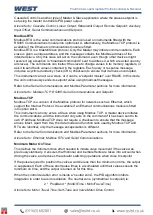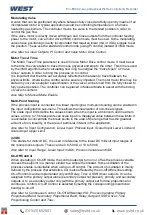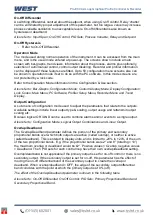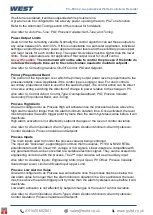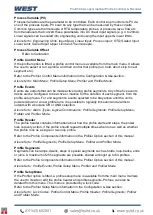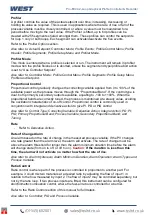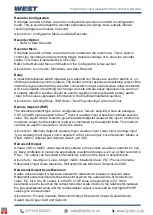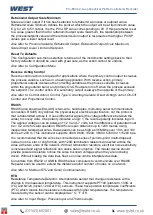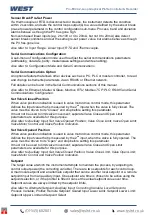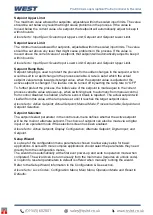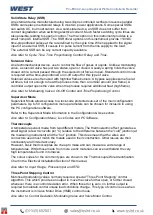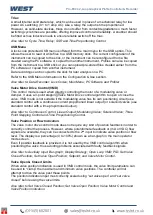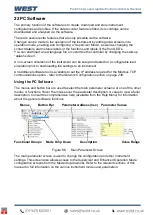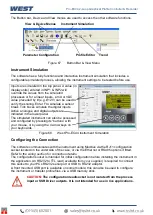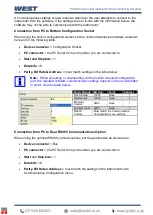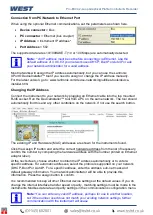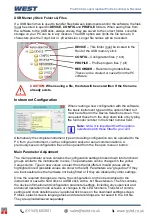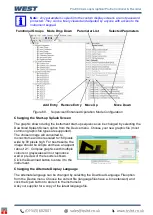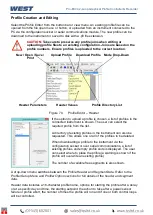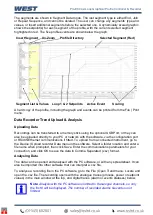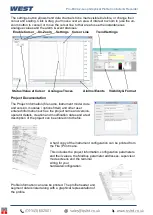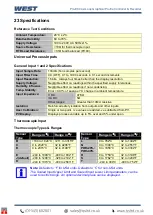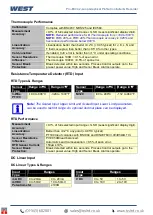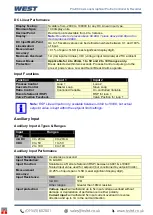
Pro-EC44 2-Loop Graphical Profile Controller & Recorder
Pro-EC44 Product Manual - 59540-2 September 2014
Page 232
Solid State Relay (SSR)
An external device manufactured using two silicone controlled rectifiers in reverse parallel.
SSRs can replace mechanical relays in most AC power applications. Some special SSRs
can switch DC, but most cannot. As a solid-state device, an SSR does not suffer from
contact degradation when switching electrical current. Much faster switching cycle times are
also possible, leading to superior control. The triac option on this instrument provides is a
small 1amp AC internal SSR. The SSR driver options on this instrument provide >10VDC
time-proportioned pulses at the rate defined by the cycle time. When applied to the signal
input of an external SSR, it causes it to pulse current from the line supply to the load.
The external SSR can be any current capacity available.
Also refer to: Cycle Time; Time Proportioning Control; Relay; and Triac.
Solenoid Valve
An electromechanical device, use to control the flow of gases or liquids. Unlike a modulating
valve, a solenoid valve has just two states, open or closed. Usually a spring holds the valve
closed until a current passed through the solenoid coil forces it open. Standard control mode
is required with a time-proportioned or on-off output for this type of valve.
Solenoid valves are often used with high/low flame burners. A bypass supplies some fuel at
all times, but not enough to heat the process more than a nominal amount (low flame). A
controller output opens the valve when the process requires additional heat (high flame).
Also refer to: Modulating Valves; On-Off Control and Time Proportioning Control.
Supervisor Mode
Supervisor Mode allows access to a lock-code protected sub-set of the main configuration
parameters. Up to 50 configuration menu parameters can be chosen for inclusion in using
the PC configuration software.
Refer to the Supervisor Mode information in the Configuration & Use section.
Also refer to: Configuration Menu; Lock Codes and PC Software.
Thermocouple
A temperature sensor made from two different metals. The thermoelectric effect generates a
small signal (a few microvolts per °C) relative to the difference between the
“cold” junction (at
the measuring instrument) and the
“hot” junction. This does mean that the wires and
connectors used must match the metals used in their construction. Other issues are their
nonlinearity and limited accuracy.
However, basic thermocouples are cheap to make and can measure a wide range of
temperatures. While those made from more exotic materials can even withstand the very
high temperatures found in furnaces.
The colour codes for the common types are shown in the Thermocouple Wire Identification
Chart in the Electrical Installation Section of this manual.
Also refer to: Input Range; Process Input and RTD.
Three Point Stepping Control
Motorised modulatin
g valves normally require a special “Three Point Stepping” control
algorithm. This which provides an output to move the valve further open, or further closed
whenever there is a control deviation error. When this error is zero, no further output is
required to maintain control unless load conditions change. This type of control is use when
the instrument is in Valve Motor Drive (VMD) control mode.
Also refer to: Control Deviation; Modulating Valve and
Summary of Contents for Pro-EC44
Page 1: ...Pro EC44 2 Loop Graphical Profile Controller Recorder Pro EC44 User Guide 59540 2 ...
Page 2: ......
Page 6: ......


